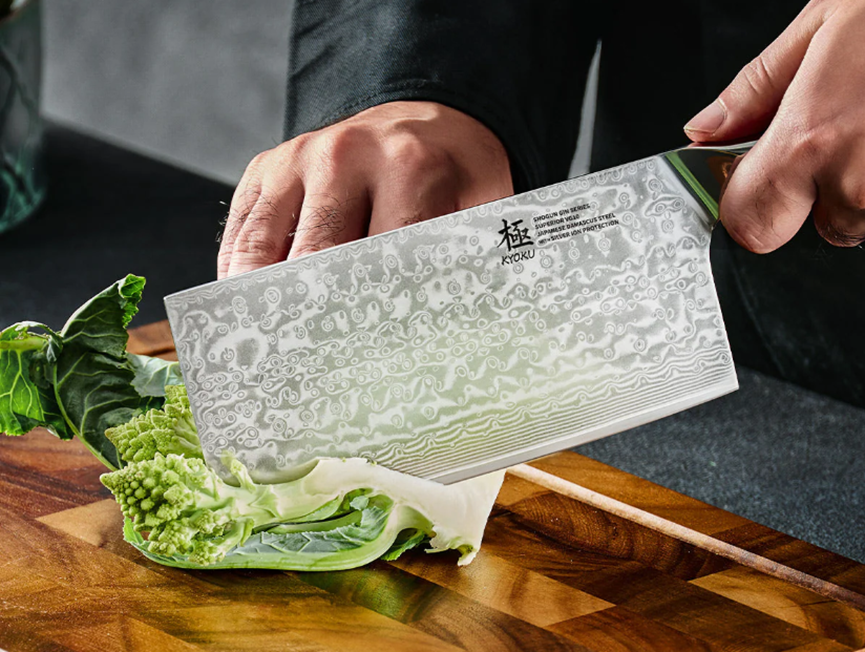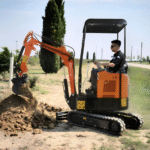There’s something almost meditative about preparing vegetables in Japanese cuisine — the rhythmic slicing, the crisp sounds, and the clean presentation that makes even the simplest dish shine. At the heart of this process is a well-crafted knife, and few tools embody that precision like the Japanese cleaver knife. Whether you’re a passionate home cook or an aspiring chef, mastering vegetable prep with a Japanese cleaver can transform your cooking experience. Let’s explore what makes this knife so special and how to use it like a pro.
What Makes the Japanese Cleaver Knife Unique
The Japanese cleaver stands out for its rectangular blade, straight edge, and lightweight balance. Unlike a Western chef’s knife that relies on a rocking motion, the Japanese cleaver is designed for an up-and-down push-cut, allowing you to slice vegetables cleanly and efficiently.
Although it resembles a Chinese cleaver in shape, the Japanese version is typically thinner, lighter, and more refined, focusing on precision rather than power. Every detail — from the blade geometry to the steel quality — is designed to achieve clean, effortless cuts, which is why it has become a favorite tool in professional and home kitchens alike.
Why It’s Ideal for Vegetable Preparation
When it comes to prepping vegetables, the Japanese cleaver excels in both performance and control:
- Clean Cuts: The straight edge slices through vegetables without crushing delicate fibers, preserving texture and color.
- Speed and Efficiency: The wide blade makes chopping quick and allows you to easily scoop and transfer ingredients.
- Precision: Ideal for fine slicing, uniform dicing, or paper-thin garnishes.
- Versatility: Handles everything from firm root vegetables to soft herbs and greens with equal ease.
Using a Japanese cleaver isn’t just about cutting — it’s about achieving balance, precision, and beauty in your cooking.
Techniques for Mastering Vegetable Cutting
To get the most out of your Japanese cleaver, proper technique is key.
- Grip and Posture: Hold the knife firmly but comfortably, with your thumb and index finger resting on either side of the blade for control. Keep your guiding hand curled under to protect your fingertips.
- Common Cuts:
- Straight slice — great for carrots, cucumbers, and zucchini.
- Julienne — thin, even strips for salads or stir-fries.
- Fine shred — perfect for cabbage, lettuce, or herbs.
- Push-Cut Motion: Use a gentle forward-and-down motion instead of rocking the blade. This technique gives you smooth, precise cuts.
- Practice Makes Perfect: Start slow, focus on uniformity, and let the knife do the work. Over time, your movements will become faster and more fluid.
Choosing the Right Japanese Cleaver Knife
When selecting a Japanese cleaver, consider these key factors:
- Blade Material:
- Carbon steel delivers exceptional sharpness and edge retention but requires more maintenance.
- Stainless steel is rust-resistant and easier to care for.
- Handle Type: Traditional wooden handles are lightweight and offer excellent balance, while Western-style handles provide a firmer grip.
- Size and Weight: A medium-sized cleaver (around 6–7 inches) is versatile for most home kitchens.
- Build Quality: Look for knives with high-quality steel and a sturdy yet thin blade for precise cutting.
A well-made cleaver should feel like a natural extension of your hand — balanced, responsive, and effortless to control.
Care and Maintenance Tips
Japanese knives are precision instruments, and proper care will keep them performing beautifully for years:
- Always hand wash and dry immediately after use.
- Use a non toxic cutting board made from wood or food-safe composite materials.
- Avoid cutting frozen foods that could chip the blade.
- Hone regularly and sharpen with a whetstone as needed.
- Store safely in a knife block, sheath, or magnetic strip.
- If using carbon steel, apply a light layer of oil occasionally to prevent rust.
Treat your cleaver with care, and it will reward you with decades of reliable performance.
Elevate Your Cooking Experience
Mastering your vegetable prep with a Japanese cleaver brings more than just sharper cuts — it brings confidence, speed, and artistry to your cooking. Each motion becomes smoother, every slice more consistent, and the joy of preparing fresh ingredients grows with every use.
Once you experience the effortless glide of a Japanese cleaver through crisp vegetables, you’ll understand why this knife is a staple in so many professional kitchens.
Conclusion
The Japanese cleaver knife is more than just a cutting tool — it’s a symbol of precision and craftsmanship. With the right technique and care, it can elevate your vegetable prep from routine to remarkable. So next time you’re in the kitchen, reach for your Japanese cleaver and experience the art of cutting with balance, control, and grace.






